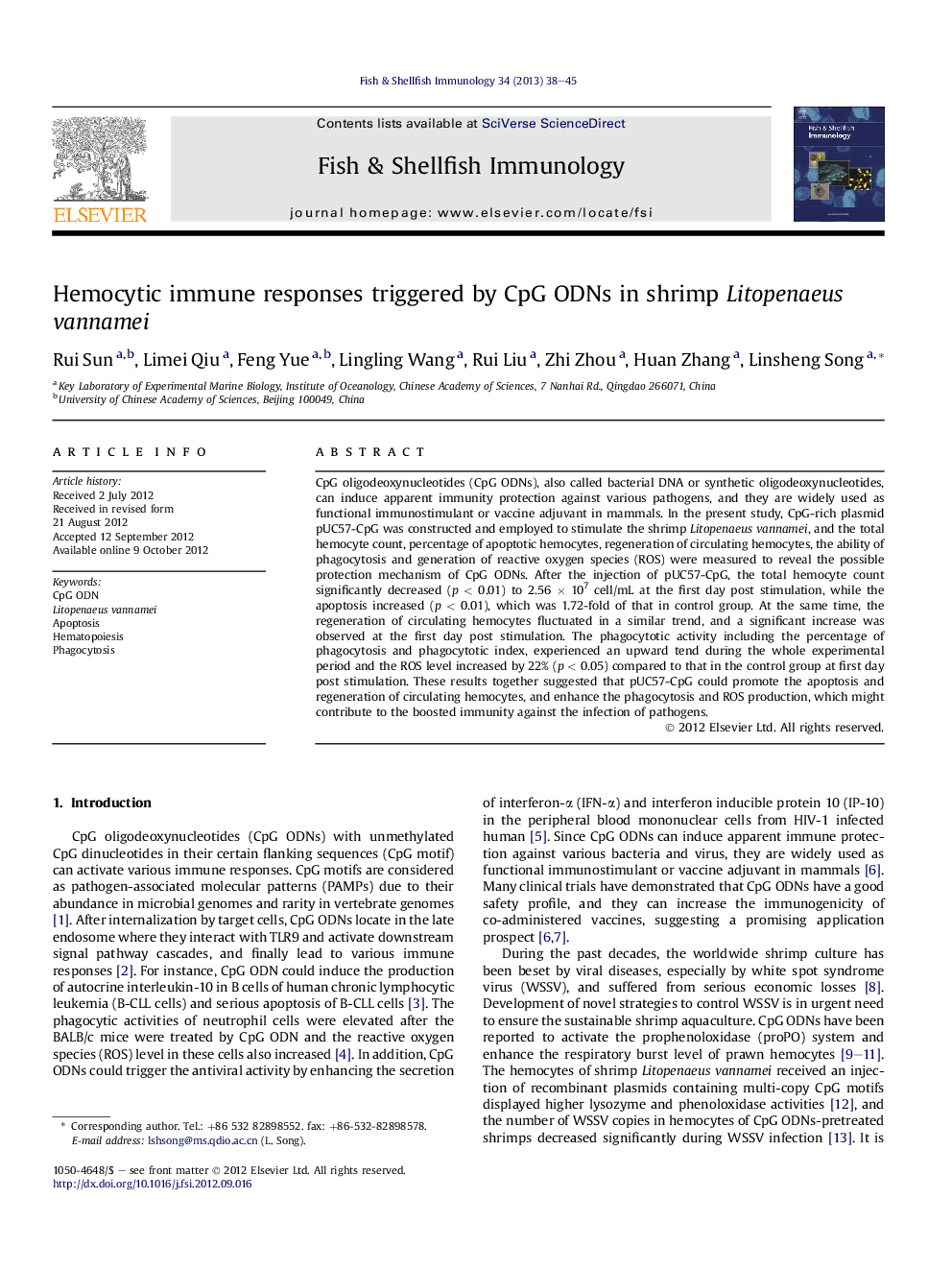| Article ID | Journal | Published Year | Pages | File Type |
|---|---|---|---|---|
| 2432256 | Fish & Shellfish Immunology | 2013 | 8 Pages |
CpG oligodeoxynucleotides (CpG ODNs), also called bacterial DNA or synthetic oligodeoxynucleotides, can induce apparent immunity protection against various pathogens, and they are widely used as functional immunostimulant or vaccine adjuvant in mammals. In the present study, CpG-rich plasmid pUC57-CpG was constructed and employed to stimulate the shrimp Litopenaeus vannamei, and the total hemocyte count, percentage of apoptotic hemocytes, regeneration of circulating hemocytes, the ability of phagocytosis and generation of reactive oxygen species (ROS) were measured to reveal the possible protection mechanism of CpG ODNs. After the injection of pUC57-CpG, the total hemocyte count significantly decreased (p < 0.01) to 2.56 × 107 cell/mL at the first day post stimulation, while the apoptosis increased (p < 0.01), which was 1.72-fold of that in control group. At the same time, the regeneration of circulating hemocytes fluctuated in a similar trend, and a significant increase was observed at the first day post stimulation. The phagocytotic activity including the percentage of phagocytosis and phagocytotic index, experienced an upward tend during the whole experimental period and the ROS level increased by 22% (p < 0.05) compared to that in the control group at first day post stimulation. These results together suggested that pUC57-CpG could promote the apoptosis and regeneration of circulating hemocytes, and enhance the phagocytosis and ROS production, which might contribute to the boosted immunity against the infection of pathogens.
► pUC57-CpG induced apoptosis of hemocytes and decreased THC. ► Circulating hemocytes regenerated in response to pUC57-CpG. ► Phagocytic activity and ROS were enhanced by pUC57-CpG treatment. ► A promising application of CpG in shrimp farming.
